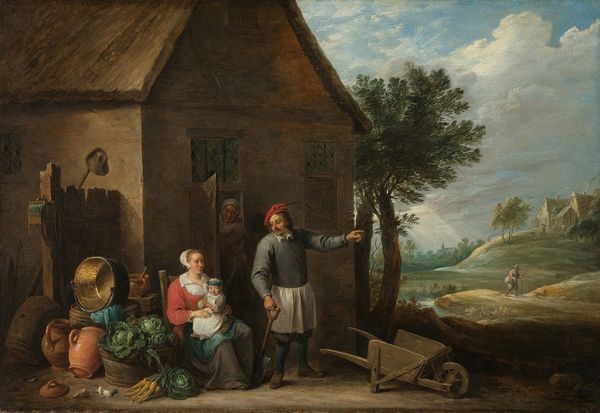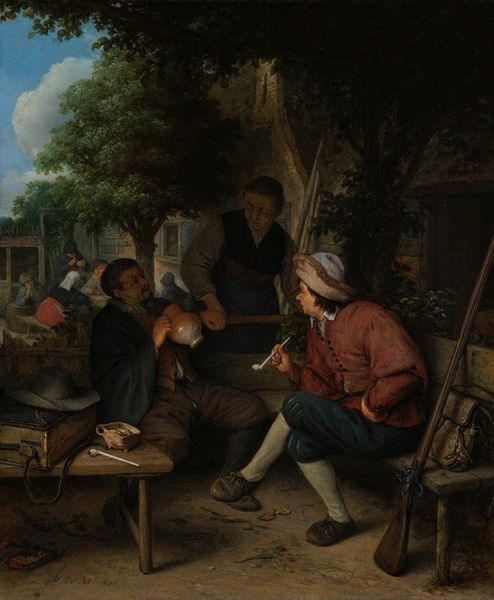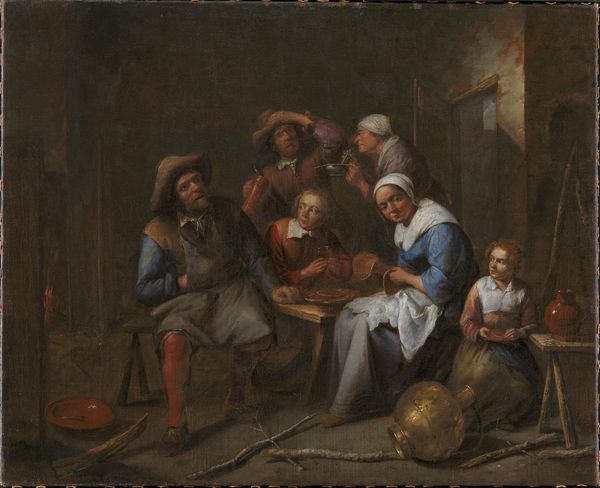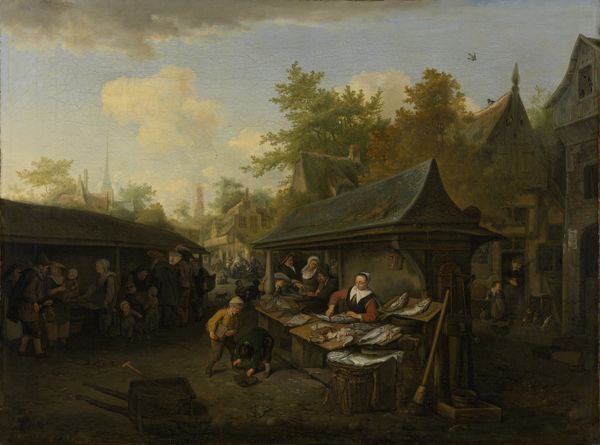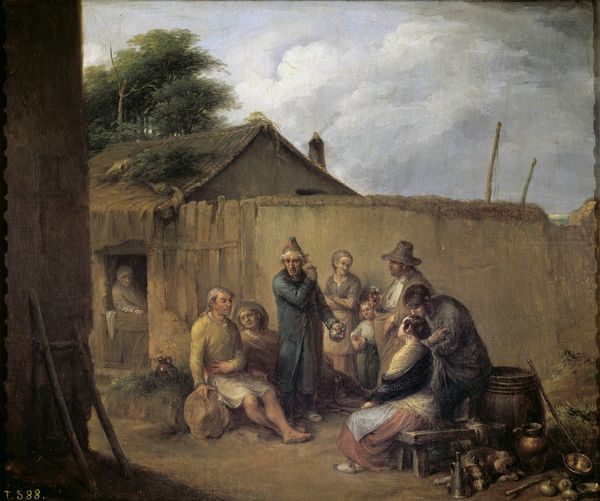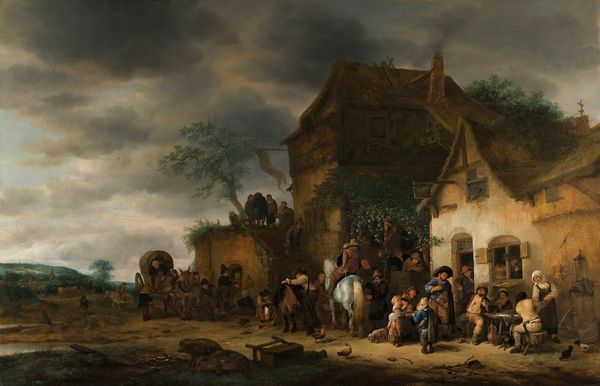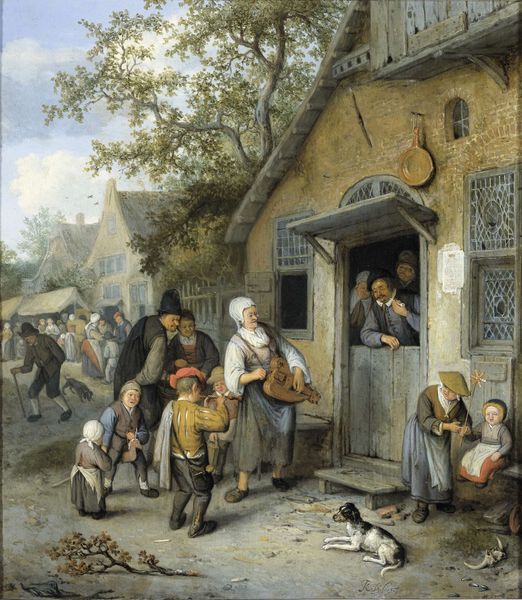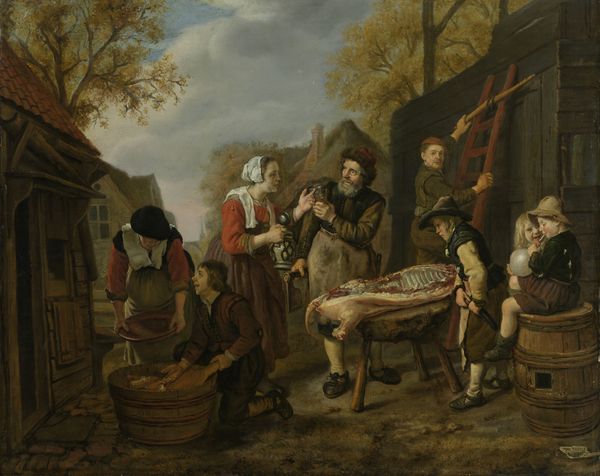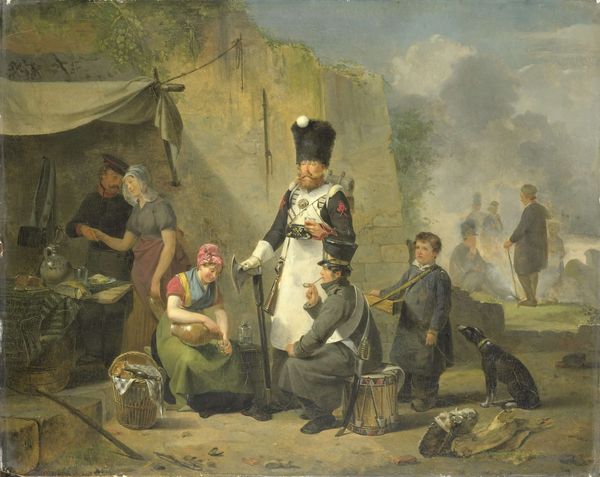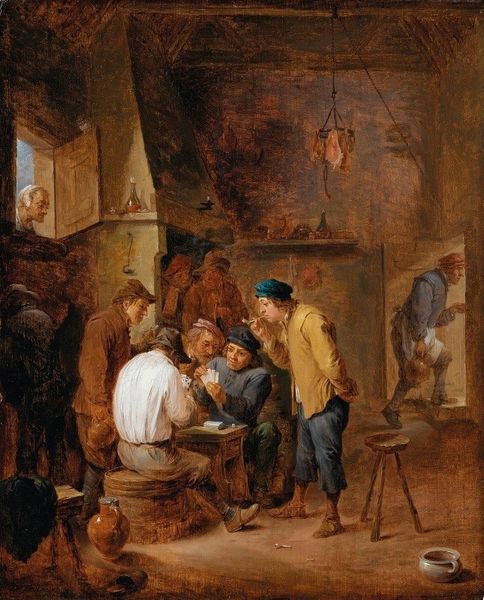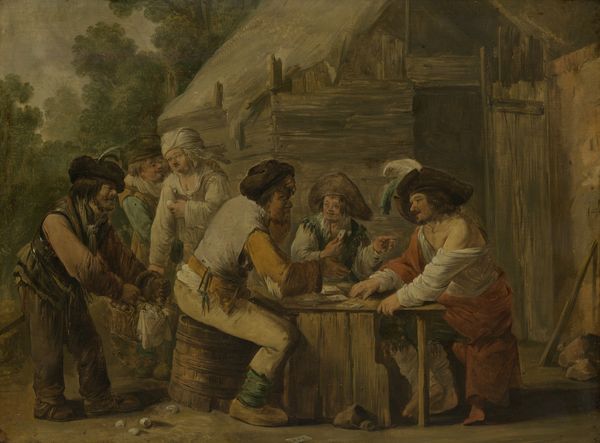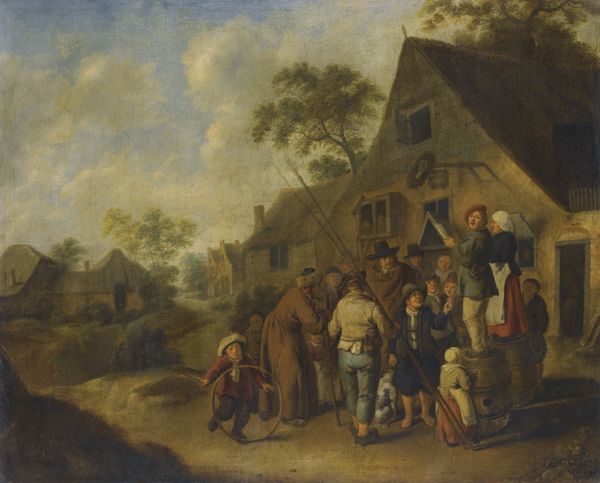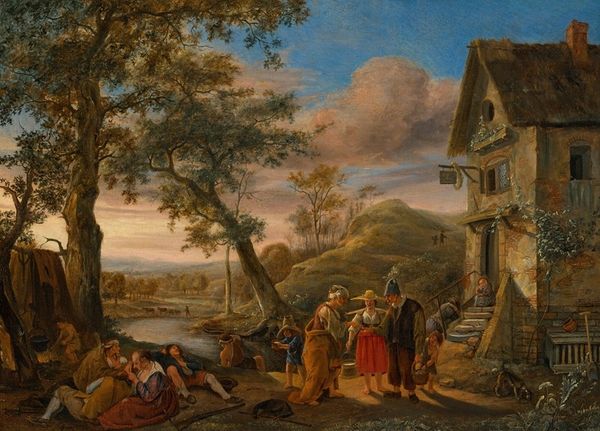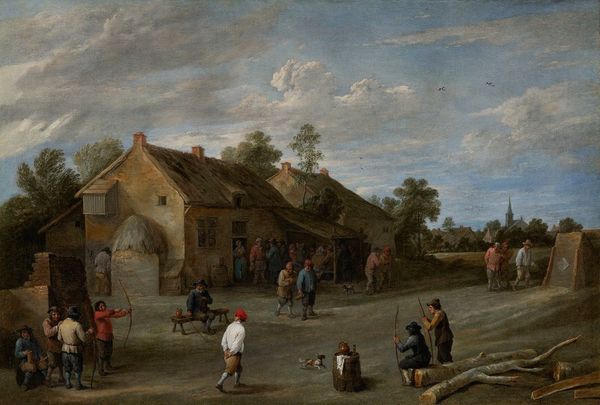
painting, oil-paint
#
figurative
#
narrative-art
#
baroque
#
dutch-golden-age
#
painting
#
oil-paint
#
figuration
#
genre-painting
#
realism
Copyright: Public Domain: Artvee
Curator: Here we have Adriaen van Ostade’s “The Quacksalver,” painted in 1648. Editor: Ah, what a delightful little scene! It's giving me folksy vibes, like stepping into a Dutch fairytale with a healthy dose of skepticism sprinkled in. I can almost smell the damp earth and hear the hushed whispers. Curator: Exactly. Ostade captures a moment from everyday life. Genre paintings like this were really popular, showcasing common trades and social interactions. Here we see a travelling charlatan, the "quacksalver," attempting to peddle his wares. Look at the arrangement. He's made himself the center with the elevated table of vials and boxes on barrels in front of what looks like an Inn or maybe even an alehouse. Editor: The material elements speak volumes! It’s like he's conducting a street theatre performance! The stage, makeshift, of course, yet framed perfectly between nature's backdrop and rudimentary building structures. It shows how this guy must have been good. And the clothing too is pretty striking as this huckster draws attention to his trade, flaunting whatever colors and styles are the inverse of drab and the color of everyone's clothes. A little bit of flare goes a long way, don't you think? Curator: Absolutely. And this brings to mind interesting considerations regarding early capitalism. You can see here the nascent forms of consumer culture and even the anxieties around product authenticity. Ostade highlights both the promises of cures and the potential for deceit, playing into concerns that resonate across social classes, from poor rural laborers to the emerging bourgeoisie of the cities who bought and bartered and consumed at every turn. Editor: Right. I mean look at those faces! Some are clearly intrigued, others are giving me serious side-eye. It’s almost like a silent movie where you can hear them narrate what is going on between their ears. There are whispers and skeptical glances. I love the subtle storytelling going on, especially in such a small space and such muted tones. The colors evoke a world of practicality, a far cry from glamour. Curator: And there is an honesty to his depictions. It's tempting to view the "realism" as inherently authentic. We must also remember that paintings of this kind had markets. We’ve spoken here about potential fraud, but they may well have functioned as a commodity and circulated as tokens of knowledge for elite classes and an illustration or commentary to city folk or merchants of a country scene from their "own" society they might visit or trade with one day. Editor: I love thinking about where the painting lived! Makes my head swim with possibility. Curator: Me too!
Comments
No comments
Be the first to comment and join the conversation on the ultimate creative platform.
